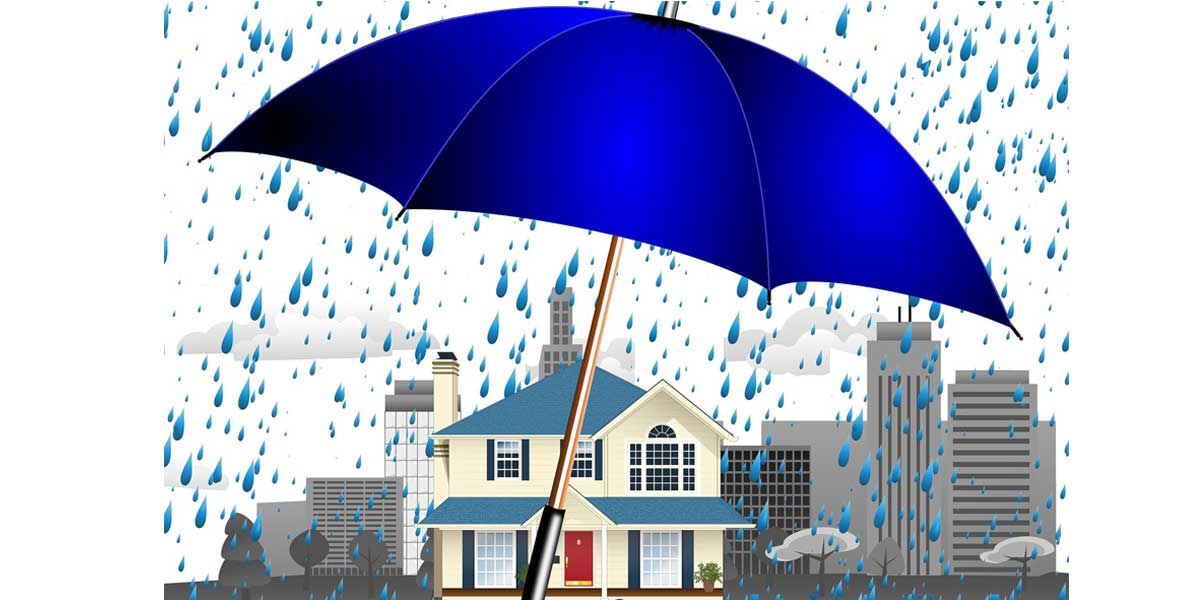Monsoon, the season that brings a sigh of relief from the scorching heat and cools down the land. But with this serenity comes the wear and tear the constant rain causes to homes and infrastructure. Seeping water, cracked walls, fungus and a gamut of health and home hazards come along through this duration and it only makes sense to prevent it from happening.
Here are some smart tips and tricks to rainproof your homes and prevent the damage.
Pre-monsoon care
Get your roof inspected: If you are living in an independent house, the roof of your home needs care and attention before the monsoon comes in. Get it inspected for cracks and damage that may be compromising the structure and get those fixed.
Get the roof treated with various weather-proof treatments available in the market to prevent formation of fungus or seeping in of water through the surface. The treatments may last you a couple of years and shall protect the roof of your home, not only through monsoon but also through other harsh weather conditions.
Rain-proof the metals, doors and windows: Grills, locks, doors, window panes etc., all made of metal go through immense damage and rusting during the increased amount of moisture during monsoon. The window panes or grills of the home are especially exposed during the rainy season and constant showers can lead to rapid rusting. To prevent this from happening, use anti-rust primers and water-proof paints. For the duration when rain stops, clean the panes and grill with a dry cloth and let them breathe. This will not only increase the lifespan of your fixtures but also prevent their damage.
Some doors may be exposed to the contact shower of rain, especially those with metal edges or trimmings can face rusting. A similar preventive paint or primer can be used to avoid rusting and damage to the door most exposed.
“The most important step towards Rain proofing one’s home is to limit the ingress of dampness to the interiors in the first place. Protection of exterior walls by filling in cracks with a polymer based sealant and finishing with a waterproof paint can prevent water seepage. This will protect the interior finishes, concealed wiring, etc from damage. In modern homes with full length glass windows, ensuring water tight gaps with a good silicone based sealant is a must. In an independent house, the roof or terrace also needs to be waterproofed by a water resistant membrane and coating.” says Sweta Parab, Senior Architect, MQA Mumbai.
Repair electricals and pipe leakages: Check for electrical defaults in and around the house before monsoon arrives and get those repaired. The moisture in the air and electricity can be the worst enemies and can cause an enormous hazard for those living in the home.
Similarly, check for leakages and blockages in pipes in and around the house. Accumulated water is the breeding ground for mosquitoes and fungus in addition to the humidity in the environment which can cause health issues and damage to the home as well.
“Efficient drainage of surface water is to be ensured with annual maintenance of the rain water pipes, traps and gutters” adds Parab.
Fix wall cracks and fungal growth: One of the first signs of damage are wall cracks and they help fungus grow. Before the rain gods drench us in showers, get the wall cracks fixed both on the interiors and exteriors of your home. Cracks on the exterior walls might lead to water seeping inside the home and damaging the furniture and your belongings. Fungus growth through these cracks would be a major health hazard.
It would be advisable to speak to an architect and expert to get this issue resolved and further protect your walls with water proof paint and anti-fungal treatments. If fungus growth has already started, the same can be removed using cleaning agents or home solutions of bleach or disinfectant liquids.

Monsoon care
Ventilate your home: Not only us humans, but our homes also go through a change in environment when the weather shifts. Monsoon elevates the level of humidity in the air, thus causing it to be damp and gloomy. Make sure the home breathes well during the monsoon as well.
When the rain stops, open the windows and let air flow in. Let the home get a refreshed sense of environment. Use dehumidifiers to maintain the level of humidity. This will prevent damage to your furniture, fixtures and other belongings and take away the misty, damp odour of the home and keep it feeling fresh.
Protect your furniture & wooden floor: Indian households have furniture made of wood, cake, jute etc., some of them passed down from generations. It is essential that these furniture pieces are protected from the high moisture content of air.
Move them away from the windows or where rain can come through. Damp wood degenerates quickly and can completely weaken your furniture. If it does get wet, dry it out with heat and always clean it with a dry cloth for maintenance.
If your home has wooden flooring, the same methods of maintenance apply. It is also advisable to put away carpets or rugs from over these floors as they may have absorbed moisture from the air causing the wood to mold or damage.
Swelling of doors and windows: Exposed wooden doors and windows are likely to swell up due to the moisture which may lead to them not closing properly letting more rain water seep in the house. Seek help from a carpenter and scrape off the swollen portions of these windows and doors and bring them back to the size they were before. A prevention for the same would be to get them polished or painted with weather-proof treatments pre-monsoon.
A little attention before monsoon and during the season can help your home weather through it with ease.




















